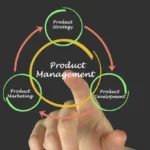In today’s dynamic business environment, safeguarding people, property, and information is more critical than ever. A comprehensive protection plan goes beyond basic security measures—it integrates physical, digital, and procedural safeguards into a cohesive strategy. Whether you’re managing a corporate office, industrial facility, or multi-tenant property, the goal is to reduce risk, ensure continuity, and foster a safe working environment. Building an effective plan requires thoughtful assessment, strategic investment, and ongoing refinement. Here are five essential steps to help you create a protection plan that’s both robust and adaptable.
Assess Risks and Vulnerabilities
The foundation of any protection plan begins with a thorough risk assessment. This involves identifying potential threats to your organization, from physical intrusions and fire hazards to cyberattacks and internal misconduct. Consider both external and internal risks, and evaluate how each could impact operations, personnel, and assets. Walk through the facility, review incident reports, and consult with department heads to gather insights. A detailed understanding of vulnerabilities allows you to prioritize resources and tailor solutions to your specific environment.
Define Clear Objectives and Protocols
Once risks are identified, the next step is to establish clear protection objectives. These should align with your organization’s operational goals and regulatory requirements. Objectives may include preventing unauthorized access, protecting sensitive data, ensuring emergency preparedness, and maintaining business continuity. For each objective, develop protocols that outline responsibilities, procedures, and escalation paths. These protocols should be documented, accessible, and regularly reviewed. Clarity in planning ensures that everyone—from leadership to frontline staff—understands their role in maintaining security.
Integrate Technology and Infrastructure
Modern protection plans rely heavily on technology to enhance visibility, control, and responsiveness. Surveillance systems, access control, intrusion detection, and environmental monitoring tools should be integrated into a centralized platform for real-time oversight. Investing in commercial security solutions allows organizations to manage multiple layers of protection efficiently. These systems can include smart cameras, biometric scanners, cloud-based access management, and automated alerts. When properly configured, technology not only deters threats but also supports rapid response and forensic analysis.
Train Personnel and Promote Awareness
Even the most advanced systems are only effective when supported by informed and engaged personnel. Training is essential to ensure that employees understand safety protocols, recognize potential threats, and respond appropriately. Conduct regular workshops, drills, and refreshers tailored to different roles within the organization. Encourage a culture of awareness by promoting open communication and empowering staff to report concerns. When employees are confident in their knowledge and responsibilities, they become active participants in the protection strategy.
Monitor, Evaluate, and Adapt
A protection plan is not a one-time initiative—it requires continuous monitoring and refinement. Use data from incident reports, system analytics, and employee feedback to evaluate performance and identify areas for improvement. Schedule periodic audits to ensure compliance and effectiveness. As threats evolve and operations change, be prepared to adapt your plan accordingly. Flexibility is key to maintaining relevance and resilience. By staying proactive and responsive, your organization can navigate challenges and maintain a secure environment over time.
Conclusion
Creating a comprehensive protection plan involves more than installing security equipment—it requires a strategic, integrated approach that addresses risks across all facets of the organization. By assessing vulnerabilities, defining clear objectives, leveraging technology, training personnel, and continuously refining your strategy, you can build a protection framework that safeguards both people and assets. In an era of heightened risk and complexity, a well-executed plan is not just a precaution—it’s a business imperative.


